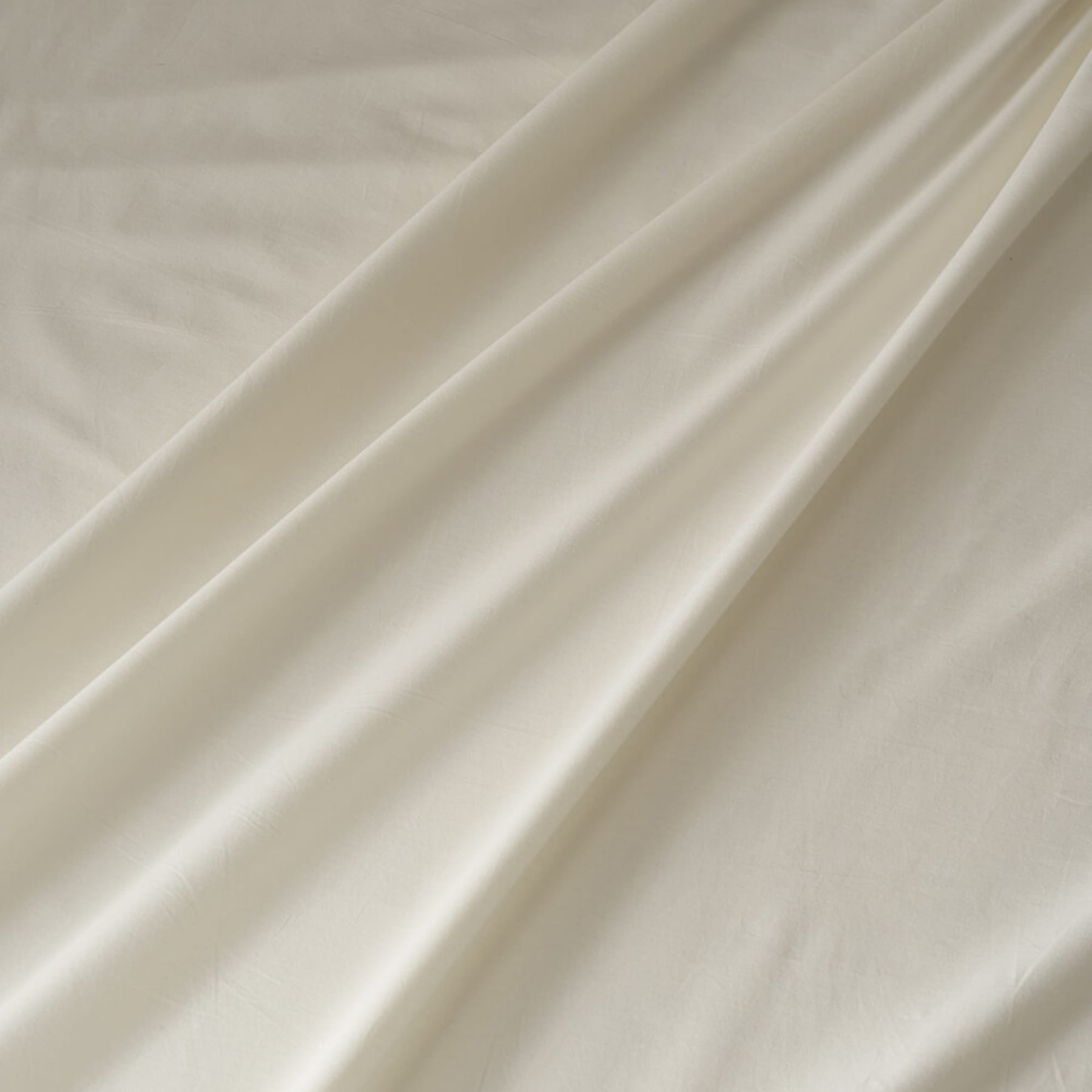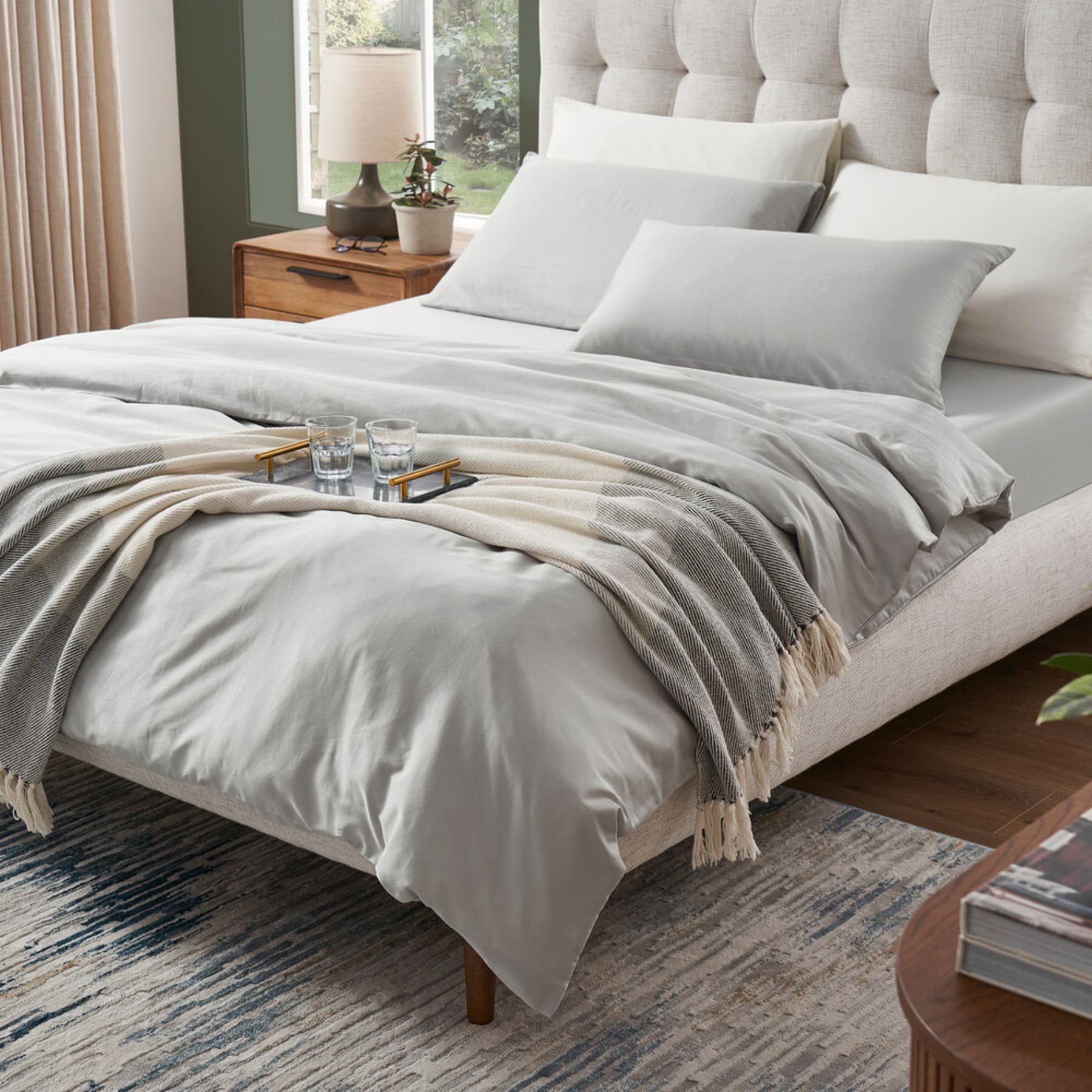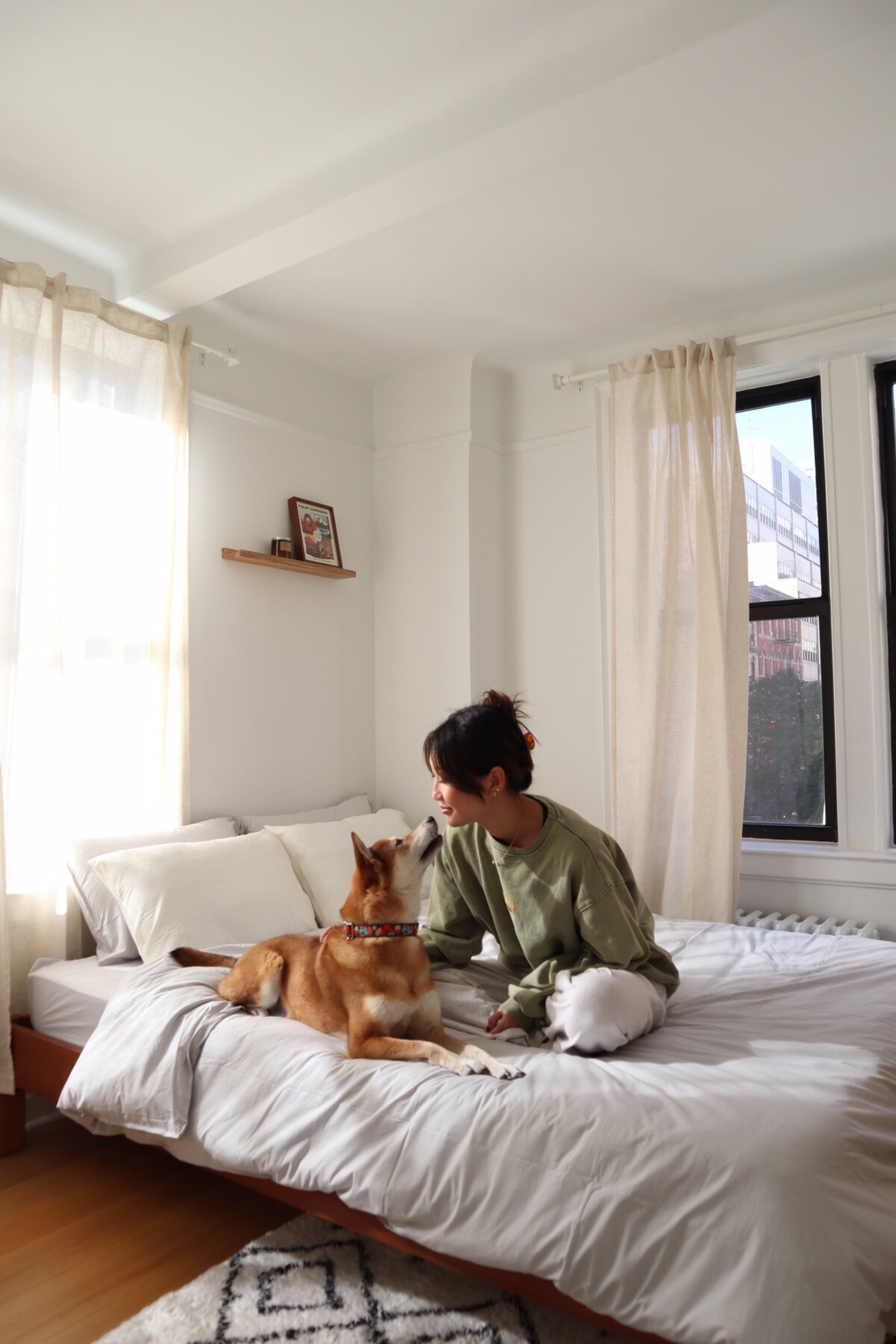
How to Choose the Right Bed Sheet
Given that we spend so many hours lying in bed at night, choosing the right bedding is extremely important and can make all the difference in the quality of sleep. Furthermore, having bed sheets that make you comfortable helps create a cozy bedroom space.
But how do you know what’s a good bed sheet and how do you pick the right one?
In this article, we'll break down everything you need to consider when choosing the perfect bed sheet for your bedroom.
Choose the right material
This goes without saying, but the material of the bed sheet should be the first thing you look into. Not all bed sheets are made equal - some materials are suitable for warmer climates, some are more eco-friendly than others, and some are just more affordable.

The Percale Fitted Sheet in Wheat.
Depending on your needs and preferences, the material of the bed sheet you choose will differ from person to person.
Here’s a brief overview of some common bed sheet materials and why they’re suitable:
Cotton: A durable, breathable material that is good for year-round use
Microfibre: Soft and lightweight material that is low-maintenance
Percale: Durable, cool and highly breathable material that is great for warm weather
Bamboo: A sustainable and eco-friendly alternative to conventional cotton
Linen: Lightweight, breathable, and moisture-wicking that is good for warm weather
Tencel: Highly breathable and moisture-wicking, which helps to regulate body temperature and keep you cool
Sateen: Durable, thick, and wrinkle-resistant material suitable for cold weather
Fleece: Plush, wool-like fabric that insulates heat
Keep the thread count in mind
One of the most commonly talked about factors when it comes to bed sheets is the thread count. But does it really matter?
While a higher thread count can be an indicator of quality, it’s not always a guarantee. Other factors like the material, type of weave, and finishing process can all impact the feel and quality of the sheet.
Additionally, some manufacturers may use ‘double-ply’ threads, which means that two threads are twisted together before weaving, which can inflate the thread count without actually improving the quality of the sheet.
So, while thread count can be a helpful factor to consider, it's important to look at the overall quality and construction of the sheet before making a decision.
Look at the weave and texture
The way a sheet is woven can have a big impact on its texture and feel. This refers to the way the threads are woven together to create the fabric of the bed sheet. There are different types of weaves that can impact the texture, feel, and breathability of the sheet.
For example, percale sheets are known for their tight, grid-like weaves that create a crisp and cool feel. On the other hand, a sateen sheet is a looser weave that creates a silky, smooth, and lustrous fabric that is often preferred for its luxurious feel.
Consider maintenance and care
Another factor to consider would be the maintenance and care of your bed sheets. While it's generally recommended to wash your bed sheets often to prevent the build-up of dirt and dust, how you wash it can differ between materials. The care instructions for a sheet can impact its performance, appearance, and lifespan.
For example, cotton sheets can usually be machine-washed, while silk sheets may require hand-washing or dry cleaning. Additionally, if you have a set of sheets with a high thread count, they may need to be washed and dried on a delicate cycle to avoid damaging the fabric.
That said, if you lead a busy lifestyle and don’t have much time to spend on laundry, consider getting bed sheets that are easy to care for and maintain.
Think about the style
Style is an important factor to consider when choosing a bed sheet as it can help tie the bedroom together to create a cohesive look.

The Sateen Duvet and Sheet Set in Feather.
Some bed sheets just exude a certain vibe and style based on their appearance and feel. For example, silk sheets give a luxurious vibe because of their glossy finish, which might suit a romantic, modern setting. On the other hand, flannel sheets give a more casual look to the bedroom due to their patterns and texture, which might gel well with a modern farmhouse interior.
Don’t forget about your climate
As mentioned above, different bed sheets are better for certain climates. Some materials, like cotton and microfibre, are great bed sheets for year-round use as they are breathable yet still provide you with enough warmth for the colder months.
That said, if you experience all four seasons where you live, you can consider investing in different bed sheets to use during different times of the year to remain comfortable throughout.
Consider the presence of pets and children
Another factor to keep in mind when getting the right bed sheets is whether you have pets or children.

The Sateen Duvet and Sheet Set in Cloud. Picture credits: @itsyuyann
For pets, it's important to consider bed sheets that are durable and resistant to scratches or tears, especially if you allow them on the bed. You’d want to choose sheets that are easy to clean and resistant to pet hair. You may also want to get dark-colored bed sheets to help camouflage stains or pet hair.
If you have children, you’d want to opt for breathable materials like cotton or linen to help regulate temperature and provide a comfortable sleep environment. Likewise, you may want to choose sheets that are hypoallergenic if your child has sensitive skin.
Choosing the right bedding can impact your sleep quality and make a big difference in the aesthetic of your bedroom. It’s important to consider the factors listed above so you can create a comfortable, stylish, and functional sleep environment.